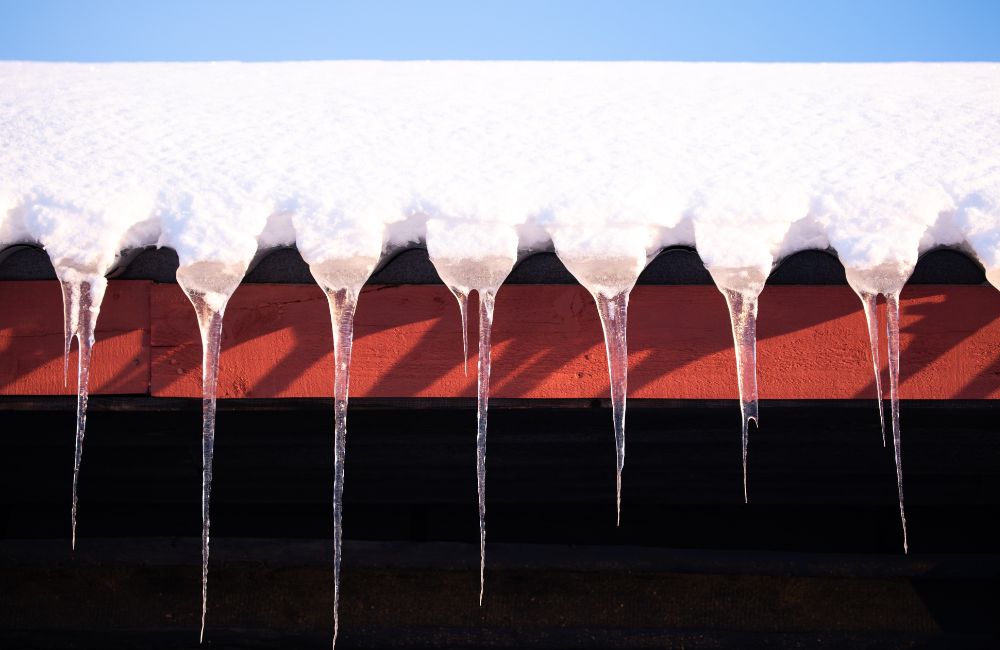Connecticut homeowners are all too familiar with the fact that our rainy season can take a significant toll on roofs. From sudden spring downpours to the remnants of summer hurricanes, Torrington, New Hartford, and the surrounding Litchfield County and Hartford County areas see more than their fair share of storms. Without proper preparation, heavy rain can quickly expose weaknesses in your roof, leading to leaks, water damage, and costly repairs.
Fortunately, there are steps you can take to reduce your risk. By understanding common causes of roof leaks and focusing on preventative measures, you can protect your home year-round and ensure your roof continues to perform at its best.
Understanding the Impact of Heavy Rain on Connecticut Roofs
Rain may seem harmless, but when combined with wind, fluctuating temperatures, and age-related wear, it becomes one of the leading causes of roof damage in the state.
Common Causes of Roof Leaks:
-
Shingle Wear: Over time, shingles lose granules, curl, or crack, weakening their ability to repel water.
-
Flashing Failures: Improperly sealed or aging flashing around chimneys, skylights, and vents often becomes a prime entry point for water.
-
Gutter Backups: Blocked or damaged gutters prevent rainwater from draining properly, causing it to back up under shingles.
-
Ice Dam Aftermath: In Connecticut, winter ice dams often set the stage for spring leaks by loosening shingles or damaging underlayment.
Inspecting Your Roof Before the Rainy Season
One of the most effective ways to prevent leaks is to schedule a professional roof inspection before peak rainy months. A trained roofer can identify minor issues that homeowners might miss, such as hairline cracks in flashing or subtle shingle displacement caused by wind.
If you live in towns like New Hartford, Bristol, or Avon, scheduling an inspection in early spring helps ensure your roof is ready for the wettest time of year. Even if no obvious problems are visible, preventative inspections often save thousands in potential water damage.
Gutter Maintenance for Rain Protection
Gutters play a crucial role in directing rainwater away from your home’s roof and foundation. When they’re clogged with leaves, twigs, or asphalt granules, they can’t do their job effectively.
Tips for Better Gutter Performance:
-
Clean Gutters Twice a Year: Once in late fall (after the leaves drop) and again in early spring.
-
Check Downspouts: Ensure they extend several feet away from your foundation to prevent pooling.
-
Look for Sagging Sections: Heavy debris or ice can cause gutters to sag, creating gaps that allow water to overflow.
For homeowners in Litchfield and Hartford Counties, where large trees often surround properties, gutter guards can be a wise investment. They reduce the frequency of cleanings while ensuring water can flow freely during heavy rains.
Protecting Vulnerable Roof Areas
Some parts of a roof are naturally more vulnerable to water intrusion. Paying extra attention to these areas can prevent leaks during Connecticut’s storm season.
Areas to Inspect Closely:
-
Flashing Around Chimneys & Skylights: Common leak sources—loose or rusted flashing allows water to seep inside.
-
Roof Valleys: Heavy rains concentrate in valleys, putting pressure on the underlayment.
-
Vent Pipes: Rubber boots around vent pipes can crack over time, leaving small but problematic gaps.
Preparing Your Attic and Interior
Preventing leaks doesn’t stop at the roof’s surface. Your attic and upper floors can provide early warnings that rainwater is finding its way inside.
What to Look For:
-
Wet insulation
-
Brown or yellow ceiling stains
-
Musty smells or humidity buildup
Regularly checking these areas—especially after heavy storms—lets you address leaks before they cause structural or mold-related damage.
When to Call a Professional Roofer
While small maintenance tasks, such as gutter cleaning, can be done by homeowners, potential leaks often require professional roofing services.
If you notice:
-
Missing shingles
-
Ceiling stains
-
Water in your attic after storms
… it’s time to contact the experts. Acting quickly prevents minor leaks from escalating into expensive repairs.
Why Preventive Care Matters in Connecticut
The cost of repairing water damage in Connecticut homes far exceeds that of regular maintenance. With our region’s unpredictable weather—frequent thunderstorms, occasional hurricanes, and heavy winter snow—roofs face year-round stress.
Regular inspections, gutter maintenance, and attention to vulnerable areas can extend your roof’s lifespan and reduce the risk of leaks. Whether you’re in Torrington, New Hartford, or anywhere across Litchfield and Hartford Counties, taking steps now ensures your home stays dry and protected when the next storm rolls in.
FAQs
How can I tell if my roof is leaking?
Look for ceiling stains, peeling paint, or damp insulation in the attic. After storms, check for new spots or musty odors.
Should I inspect my roof after every heavy rain?
You don’t need a full inspection, but walking your property to look for missing shingles, gutter overflow, or interior water stains is a wise precaution.
Do roof leaks always require a replacement?
Not always. Many can be fixed with targeted roof repairs to flashing, shingles, or underlayment.
What is the best time of year for leak prevention in Connecticut?
Spring and fall are ideal—before heavy rain or after winter’s freeze-thaw cycles.
Are gutter guards worth it?
Yes. They reduce clogs, minimize overflow, and help protect your roof and foundation.
Contact Elite Roofing CT
With over 15 years of experience, Elite Roofing CT specializes in durable, energy-efficient roofing solutions, including inspections, maintenance, and leak prevention. Serving New Hartford, Litchfield County, and the greater Hartford area, we help homeowners prepare for every season with expert roofing services.
📍 Location: 6 Hidden Hill Rd, New Hartford, CT 06057
📞 Phone: 860-309-0493




